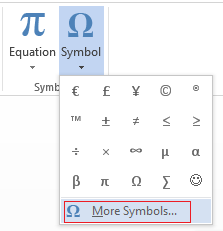
#Turn off auto hyphenation in word 2013 code#
How can I most easily prevent bad hyphenation breaks in my code elements, working within the tool chain I have? (I'm not free to change that. (Also, it sounds like it didn't work for him.) This forum post suggests a way to hard-wire them within the text, meaning I would have to put a special directive around each class name, method name, and so on. to turn off hyphenation in a table of contents or a preface, but that's too coarse. This FO documentation describes a way to do this at the page-block level, e.g. Ideally I would like to be able to write a style directive that says "don't hyphenate inside these XML elements" and apply it to, , and several others. I am using DocBook, which we transform to Formatting Objects (FO) and thence to PDF. I'm looking for a solution that fixes all of them, without me having to individually handle each case. I can try to "write around" egregious cases to try to avoid the problem term being near the end of a line, but that's fragile. In these cases I would rather have a short line than hyphenation, though I want hyphenation in the document in general. Hope this article will be useful to you.In technical documentation, sometimes the tool's automatic hyphenation makes a bad break in the middle of a term, like the name of an environment variable or function. Then you will have to convert the file extension, which I have made an article to talk about, so check it out if you need it sometimes. The new version of Word can easily open files created by the old version of Word, but the reverse is not always the case.
#Turn off auto hyphenation in word 2013 how to#
Okay, so I have finished showing you how to handle the problem when Word automatically switches to Compatibility Mode, and in addition, also how to switch Compatibility mode to normal mode as well. You can check at the option Do not ask me again about converting documents if you don’t want the box to appear again in the future. Step 2: A Microsoft Word box appears, just click OK. Step 1: In File, choose Info, then Convert. Switch Compatibility Mode to Normal mode.

Step 4: After that reset your computer and the problem has been solved. If not found, create a DWORD with the same name and set its value to 0 Word 2016 and Word 2019: HKEY_CURRENT_USER\Software\Microsoft\Office\16.0\Word\Optionsįind and delete the DWORD named CompatMode Word 2013: HKEY_CURRENT_USER\Software\Microsoft\Office\15.0\Word\Options Self-published writers should use the rules of book formatting to create professional-looking books. Word 2010: HKEY_CURRENT_USER\Software\Microsoft\Office\14.0\Word\Options Learn the rules for end-of-line word hyphenation for print books.

Word 2007: HKEY_CURRENT_USER\Software\Microsoft\Office\12.0\Word\Options To manually hyphenate a word at the end of a line and only at the end of a line, use Ctrl + Hyphen (rather than using a hyphen only). Whatever the reason, you can add hyphens to a word, tell Word to skip the hyphenation for a word, or hyphenate in a different place. Step 2: Depending on the version of Word you are using, select the appropriate key. Maybe you want to hyphenate a long word earlier than where Word hyphenates it. If neither of the above methods work then you should try this one, but remember to back up the Registry before doing so. Step 2: Then delete the Normal file, Word will automatically create a new file and the problem will be solved.

Step 1: Press Window + R to open Run dialog box. This method works well in case you have multiple versions of Word installed on your computer. In the Save files in this format section, select Word Document (*.docx). Step 1: Open Word, in File choose Options. Well, to help you solve the problem above, I will guide you on how to turn off the Compatibility Mode also to convert text from Compatibility Mode to normal mode. However, in reality, for some subjective or objective reason, the mode will not work according to its principle, may appears every time you open Word or generally displayed in a bluff. That is the working principle of this Compatibility Mode feature. This is to ensure that after editing, it can still be opened with Word 2003. You can still edit with this document but some features will be limited. doc file with Word version 2010 or more, you will encounter the text Compatibility Mode which means this mode has been enabled. Switch Compatibility Mode to Normal mode.įor example when you open a.


 0 kommentar(er)
0 kommentar(er)
